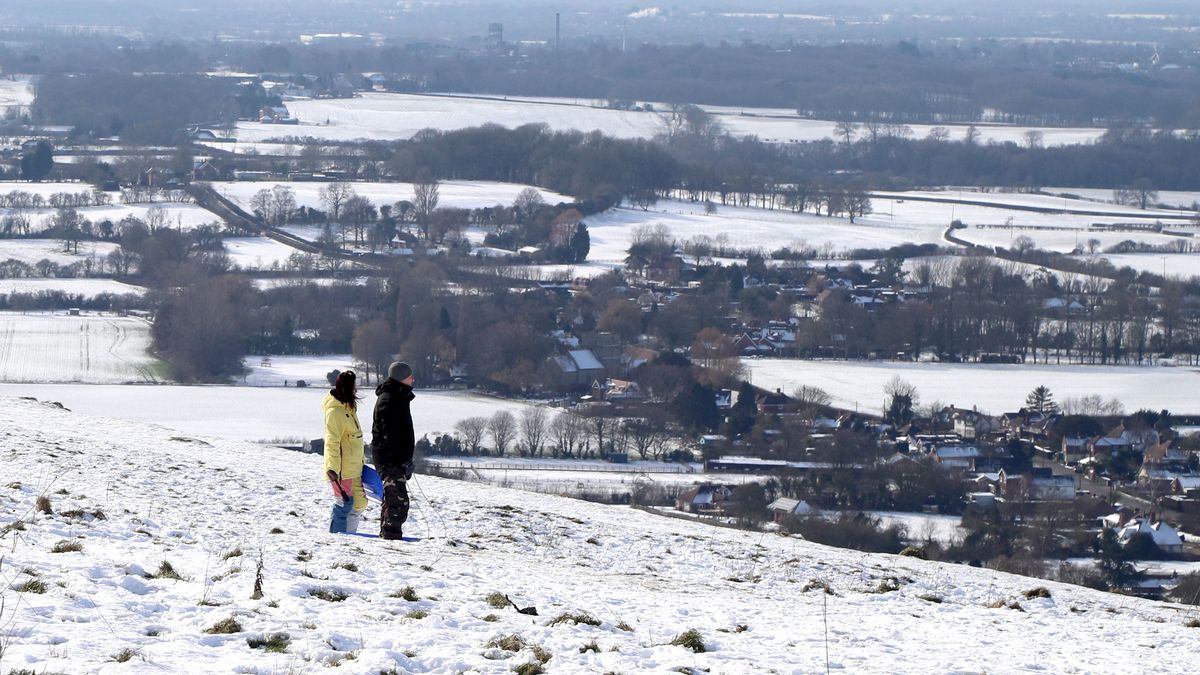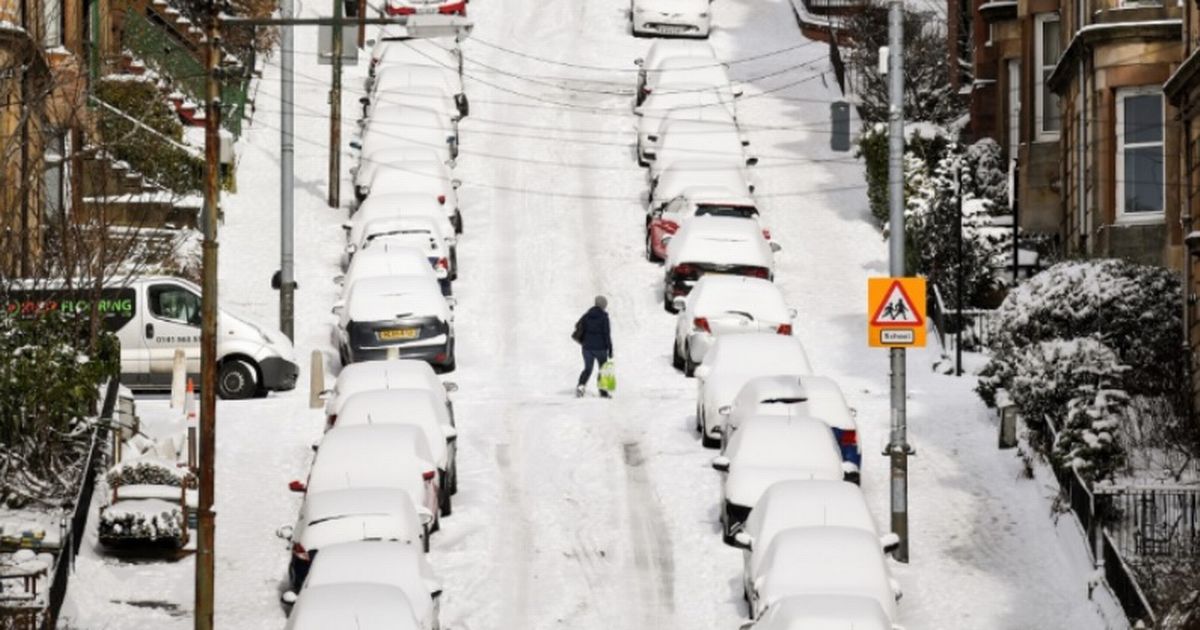Special £25 Cold Weather Payments set to enter bank accounts in the coming weeks, offering vital financial support to eligible individuals and families during the harsh winter months. This payment aims to alleviate the strain of rising energy costs and provide a much-needed boost to those most vulnerable to the cold. We’ll explore who qualifies, when to expect the money, and the broader impact of this initiative.
This program targets specific demographics based on age, location, and existing benefits. The payment is delivered directly via bank transfer, ensuring quick access to funds. While £25 might seem a small amount, for many, it represents crucial assistance in covering essential bills or purchasing warm clothing. The government’s rationale behind the scheme, public perception, and the overall effectiveness will also be examined.
Eligibility for the £25 Cold Weather Payment
The £25 Cold Weather Payment is a government initiative designed to provide financial assistance to vulnerable individuals during periods of exceptionally cold weather. Eligibility is determined by a combination of factors, ensuring the payment reaches those most in need.
Eligibility Criteria Details, Special £25 Cold Weather Payments set to enter bank accounts in
To receive the payment, individuals must be in receipt of certain benefits and live in an area where the temperature has dropped to or below zero degrees Celsius for seven consecutive days. Age is not a direct eligibility criterion; however, many recipients of qualifying benefits tend to be older individuals. The specific benefits that qualify include Pension Credit, Income Support, Income-based Jobseeker’s Allowance, Income-related Employment and Support Allowance, Universal Credit and Housing Benefit.
Comparison with Similar Programs

The £25 Cold Weather Payment differs from other government assistance programs in its trigger mechanism – a sustained period of freezing temperatures. Other programs, such as the Winter Fuel Payment, provide assistance regardless of weather conditions but are often means-tested differently. The Cold Weather Payment is a targeted, short-term response to extreme weather, supplementing existing benefits rather than replacing them.
Eligibility Scenarios

| Benefit Received | Location | Temperature | Eligible? |
|---|---|---|---|
| Pension Credit | North Yorkshire | Below 0°C for 7 consecutive days | Yes |
| Universal Credit | London | Above 0°C | No |
| Jobseeker’s Allowance (Income-based) | Scotland | Below 0°C for 7 consecutive days | Yes |
| Child Benefit | Wales | Below 0°C for 6 consecutive days | No |
Payment Distribution and Timeline
The payment process is largely automated. Once the criteria are met (seven consecutive days of freezing temperatures in a designated area), the payment is automatically processed and transferred to eligible recipients’ bank accounts. The timeline for payment varies depending on the speed of weather data verification and the banking processes.
Payment Distribution Process
The payment is typically made within 14 days of the seven-day cold spell ending. Payments are made directly into the bank accounts linked to the claimant’s benefit claim. There are no separate applications required.
Payment Distribution Flowchart
A flowchart would visually depict the following steps: 1. Temperature monitoring; 2. Seven consecutive days below 0°C; 3. Triggering of payment process; 4. Verification of eligible recipients; 5.
Payment disbursement to bank accounts; 6. Payment confirmation.
Impact of the £25 Payment
While £25 may seem a small amount, for low-income households, it can provide crucial support during a period of increased energy costs. This payment can help alleviate pressure on household budgets, potentially preventing difficult choices between heating and other essential needs.
Impact on Financial Well-being
The £25 can be used for various purposes, such as purchasing extra heating fuel, covering food costs, or addressing unexpected repairs. For example, it could help cover the cost of a boiler repair or allow purchase of extra blankets or warm clothing. Even a small amount can make a difference in mitigating the financial strain of cold weather.
Government Policy and Rationale: Special £25 Cold Weather Payments Set To Enter Bank Accounts In
The government’s rationale behind the £25 Cold Weather Payment is to offer targeted support to vulnerable individuals during periods of extreme cold. The program aims to protect the most vulnerable members of society from the financial hardships associated with high energy costs during cold snaps.
That £25 Cold Weather Payment hitting your account? Sweet! While you’re waiting, why not boost your career prospects? Check out these affordable IT courses for professionals seeking upskilling to learn new skills. That extra cash could help fund your training, and then you can look forward to even better financial stability after your course! Hopefully, that £25 payment will be a little less impactful next year with your new job!
Policy Objectives and Social Welfare
The program’s main objective is to improve the well-being of vulnerable individuals during periods of cold weather by providing a small financial buffer. It aims to reduce fuel poverty and improve public health outcomes by helping people afford adequate heating.
Comparison with International Programs
Many countries have similar cold weather assistance programs, though the specifics vary. Some countries may offer more generous payments or broader eligibility criteria. For example, Canada’s energy assistance programs are often more comprehensive, incorporating broader income support measures.
Public Perception and Response

Public reaction to the £25 Cold Weather Payment has been mixed. While many appreciate the gesture of support, others criticize the amount as insufficient to address the rising cost of living.
Media Coverage and Public Opinion
Media coverage has highlighted both the positive aspects of the program – offering some relief to vulnerable households – and the criticisms – the payment amount is too low to make a significant impact in the face of escalating energy prices. Public opinion is largely divided, reflecting the complexity of the issue and the diverse financial situations of those affected.
Public Concerns and Criticisms
- The amount (£25) is too low to make a substantial difference.
- The eligibility criteria are too restrictive, excluding many who are struggling financially.
- The payment is not a long-term solution to the problem of fuel poverty.
Visual Representation of Payment Data
Visual representations would provide a clear overview of the payment distribution. Data would need to be collected from government sources to accurately reflect the number of recipients in different regions and demographics.
Hey, those Special £25 Cold Weather Payments are hitting bank accounts soon – perfect timing, right? Especially considering the current health climate; check out this article about the HMPV outbreak: China Calls HMPV Outbreak ‘Winter Occurrence’, India Says ‘Don’t. It’s a good reminder to stay healthy during cold snaps, so make sure you’re prepared for those chilly days and use that extra cash wisely!
Regional Distribution Bar Chart
A bar chart could display the number of payments made in different regions of the UK (e.g., North East, North West, Yorkshire, etc.). Each bar would represent a region, with its height corresponding to the total number of payments made in that area. Regions with higher concentrations of recipients of qualifying benefits would show taller bars.
Demographic Distribution Pie Chart
A pie chart could illustrate the proportion of recipients across various demographic groups (e.g., age ranges, household types). Each slice of the pie would represent a demographic group, with its size reflecting the percentage of total recipients belonging to that group. For example, a larger slice might represent recipients aged 65 and over.
Geographic Distribution Map
A map of the UK could show the distribution of payments across different areas using color-coding. Darker shades could indicate areas with a higher density of payments, while lighter shades would represent areas with fewer payments. This visual would highlight geographic variations in the need for cold weather assistance, potentially reflecting factors such as climate and socioeconomic conditions.
Last Point

The £25 Cold Weather Payment represents a targeted effort to mitigate the financial burden of cold weather on vulnerable populations. While the amount is modest, its timely arrival can make a significant difference in the lives of those who receive it. Further analysis of its impact and public response will be crucial in evaluating its effectiveness and informing future social welfare initiatives.
Understanding the eligibility criteria and payment process is key for those seeking to benefit from this program.
FAQ Insights
How do I know if I’m eligible?
Eligibility depends on your location, age, and the benefits you receive. Check the government website for detailed criteria.
What if I don’t receive the payment?
If you believe you’re eligible but haven’t received the payment, contact the relevant government department to inquire.
That £25 Cold Weather Payment hitting your account? Nice! While you’re checking your finances, it might be a good time to also consider your career prospects. If you’re thinking about a change, check out this resource on full stack developer salary expectations and job outlook to see if a tech career is right for you.
Then, you can plan how to best use that extra £25 – maybe a celebratory coffee? Either way, enjoy that extra cash!
When will the payments be made?
The payment timeline is usually announced beforehand; check official government sources for the most up-to-date information.
Can I use the payment for anything I want?
Yes, the payment is yours to use as you see fit to help cover essential expenses.
